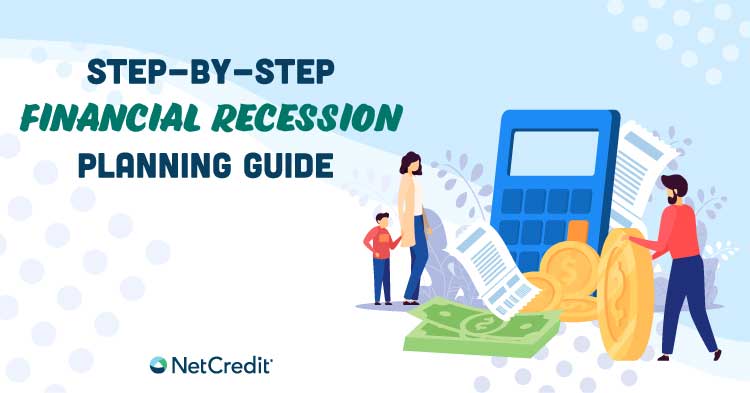From small rural towns to major metropolitan cities, COVID-19 continues to present many challenges across the nation. To provide a helping hand to millions of Americans in need, President Biden recently signed the American Rescue Plan Act of 2021 into law. This historic $1.9 trillion economic aid package includes a variety of measures designed to help ease the burden of COVID-19, extending relief originally provided under the CARES Act.
So, if you’re wondering what this massive, new stimulus package means for you, here’s a quick overview of the most important aspects included in the recent bill.
A Third Round of COVID-19 Stimulus Checks
For Americans with adjusted gross incomes (AGIs) of $75,000 or less, the American Rescue Plan brings good news: direct stimulus payments of up to $1,400 per individual. This time, the bill also includes additional payments for each qualified dependent, regardless of their age, as well.
Unlike previous versions of the bill, the payments quickly phase out for those with AGIs over $75,000. Individuals that have AGIs over $80,000 (and couples with a combined AGI over $160,000) can expect no direct payments this round. However, if you’re just above the income cap and are in need of additional funds, there may be flexible loan options available to you from reputable lenders, such as an online loan or a line of credit.
Extended Unemployment Benefits
With Pandemic Unemployment Assistance (PUA) initially set to expire in mid-March, the new stimulus package arrived just in time to prevent a lapse in much-needed relief. The American Rescue Plan extends current unemployment insurance benefits and eligibility to September 6, 2021. If you’re unemployed, this means that you may still qualify for PUA benefits of up to $300 per week while you search for a new job. What’s more, the maximum time you can receive those benefits has been extended from 50 to 79 weeks.
Federal Pandemic Unemployment Compensation (FPUC) benefits of $300 have also been extended until at least September 6, 2021. Keep in mind, if your family earns $150,000 or less per year, the first $10,200 in unemployment benefits you received in 2020 will be tax-free as well.
An Increased Child Tax Credit
If you have children ages 6 to 17 — of which there are over 66 million in the U.S. — the American Rescue Plan has increased the maximum amount of the Child Tax Credit you can receive from $2,000 to $3,000 per child a year. Plus, for couples earning up to $150,000 (and single parents who earn $112,500 or less) a year, the maximum amount is $3,600 per child under the age of 6.
To put it into perspective, a typical family of three with one child would receive an additional $250 per month if that child is age 6 to 17. If the child is 5 years of age or younger, the family would receive an extra $300 per month.
An Expanded Earned Income Tax Credit
In addition to increasing the Child Tax Credit, the American Rescue Plan has also significantly expanded the Earned Income Tax Credit. If you’re one of the millions of hardworking, low-income Americans, this means that you may now be eligible for a tax credit increase as much as $1,000. The exact amount will ultimately depend on your income and filing status. So, if your income has dropped considerably in the past year, it’s a good idea to file your taxes as soon as possible.
More State and Local Government Aid
President Biden’s American Rescue Plan also includes $350 billion in aid for states, cities, tribal governments and U.S. territories that have been bearing the brunt of COVID-19. These emergency funds are intended to help replace the considerable loss in tax revenue due to the pandemic. More specifically, they will go toward essential, day-to-day needs such as supporting hard-hit public transit agencies, keeping public workers on the job and more.
Tax-Free Student Loan Forgiveness
To be perfectly clear — the American Rescue Plan that President Biden signed into law does not include any form of student loan forgiveness. That said, it did manage to include a provision that effectively makes student loan forgiveness tax free, as long as it occurs between December 30th, 2020 and January 1, 2026.
Considering that loan forgiveness normally counts as taxable income, this relief measure could make student loan forgiveness more affordable for those that qualify under other government programs, such as Public Service Loan Forgiveness (PSLF).
An Improved Response to the COVID-19 Pandemic
Arguably the most critical aspect of the American Rescue Plan revolves around its ambitious plan to improve the government response to the pandemic. About $160 billion of the $1.9 trillion relief package will be used to pay for measures like additional COVID-19 testing, contact tracing and increasing the size of the public health workforce. It will also provide $130 billion to help public schools safely reopen and ensure that all students can receive the education they deserve within the first 100 days that President Biden is in office.
References
White House (2021) The American Rescue Plan Fact Sheet.
The information in this article is provided for educational and informational purposes only, without any express or implied warranty of any kind, including warranties of accuracy, completeness or fitness for any particular purpose. The information in this article is not intended to be and does not constitute financial, legal or any other advice. The information in this article is general in nature and is not specific to you the user or anyone else.






